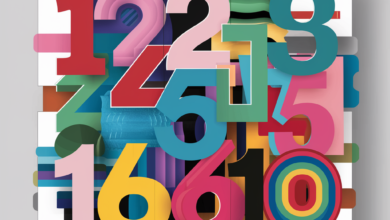
Table of Contents
The term «green hat» is a well-known slang phrase in China, often used to describe a situation where a man is being cheated on by his wife. But why is it specifically referred to as a «green hat» rather than a «red hat» or «yellow hat»?
Why is Cheating Referred to as Wearing a Green Hat?
The term «green hat» directly translates to an actual green hat. It is used metaphorically to describe someone whose spouse is unfaithful. The phrase implies that the person is being humiliated or disgraced. Although the term «green hat» has various interpretations, the core meaning has remained the same over time. This expression has long been used to signify infidelity.
Historically, the term «green hat» has deep roots in Chinese culture. Even today, it remains a topic of interest and is frequently discussed in casual conversations. The term originally did not specifically refer to marital infidelity but was associated with low-status professions. Over time, it evolved to specifically denote a man whose wife is unfaithful.
Despite numerous folk explanations, the term «green hat» actually traces back to the Tang and Song dynasties, and some suggest its origins are in the Yuan dynasty. In modern usage, saying «your wife gave you a green hat» means you are the victim of infidelity. This expression gained additional notoriety and became more commonly used as an insult, especially after high-profile cases made it more prominent.
The «Green Hat» in the Tang and Song Dynasties
In the Tang dynasty, the color green was associated with lower social status. For instance, the term «changfu» described a man who allowed his wife to work as a prostitute while he wore a green hat to attract clients. Thus, «green hat» became synonymous with being cheated on.
Even in official attire, green was not highly regarded. During the Southern and Northern Dynasties, a color hierarchy was established for official clothing: red, purple, dark red, green, and blue. In the Tang dynasty, officials of lower ranks wore green, indicating their lower status.
Green, positioned between blue and yellow, signified a lower status within the traditional Chinese color system. Hence, green clothing symbolized a lower social rank. This is reflected in Bai Juyi’s poem «Missing Wei Zhi,» where he uses «green uniforms» to denote a lowly status. Similarly, officials in the Tang dynasty would use green headscarves to publicly shame offenders.
Shen Kuo’s «Dream Pool Essays» noted that in Suzhou, unruly youths wore green scarves, and officials compared them to butchers and wine sellers, reflecting their low status. This reinforces the association of green hats with lower social standing.
The «Green Hat» in the Yuan and Ming Dynasties

Another theory suggests that the association of the green hat with infidelity began in the Yuan dynasty. The «Yuan Code of the Ministry of Rites and Clothing Colors» stated that male relatives of prostitutes were required to wear green scarves.
According to legend, Yuan society was divided into ten classes, with prostitutes occupying the lowest rank. While this classification was more myth than fact, the Yuan dynasty did use color codes to denote social status, and the Ming dynasty continued this practice. Zhu Yuanzhang (creator of Ming dynasty) mandated that musicians and prostitutes wear green scarves to distinguish them from commoners.
Zhu Yuanzhang’s decree that men related to prostitutes wear green headscarves, red waistbands, and pigskin shoes meant that seeing a man in a green hat indicated that his wife or daughter was a prostitute. Over time, «green headscarf» became synonymous with the male relatives of prostitutes. Since blue and green were both considered inferior colors, «green headscarf» eventually came to exclusively refer to a man whose wife was unfaithful, evolving into «green hat.»
This historical evolution highlights how the term «green hat» has become embedded in Chinese slang, representing marital betrayal.
How to Say «Wearing a Green Hat» in Chinese
In Chinese, the phrase for «wearing a green hat» is «戴绿帽子» (dài lǜ màozi). This term is widely understood to mean being cheated on by one’s spouse and is commonly used in both spoken and written Chinese to describe this situation.
Modern Usage of «Green» in Chinese Slang
In contemporary Chinese society, the term «green hat» (戴绿帽子, dài lǜ màozi) is no longer the only expression used to imply that someone has been cheated on. Young people in China have expanded the use of «green» to refer to any kind of green on the head, not just a literal green hat.
For instance, you might hear someone say, «I see your head is a bit green,» which serves as a subtle way to suggest that someone has been cheated on. This modern twist on the traditional «green hat» slang reflects a broader cultural usage of the color green in the context of infidelity. Additionally, there’s a related expression that means having a «meadow» on your head, which conveys a similar idea. This metaphorical language play highlights how the concept of betrayal has evolved in the Chinese language and culture.


